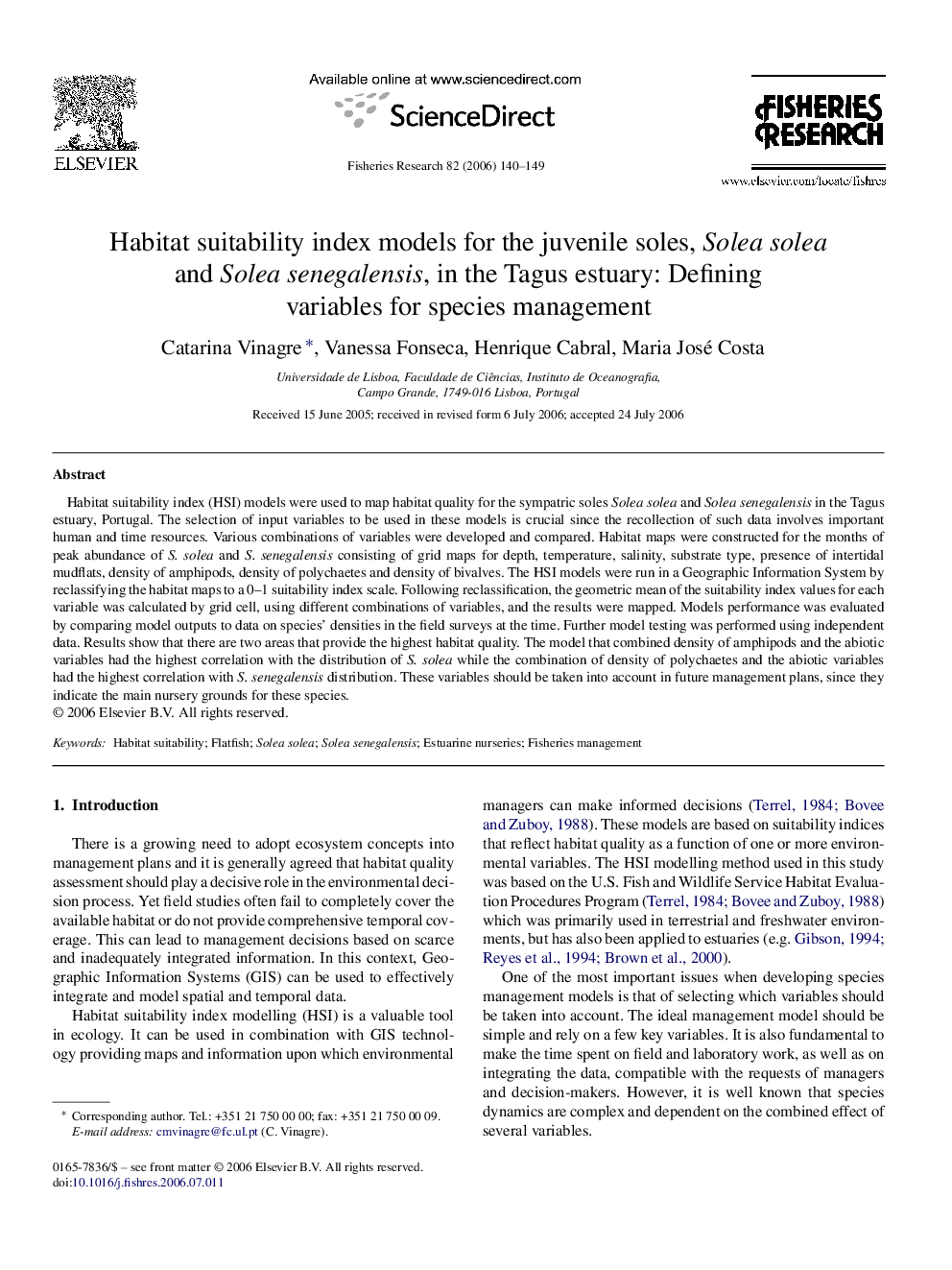| Article ID | Journal | Published Year | Pages | File Type |
|---|---|---|---|---|
| 4544835 | Fisheries Research | 2006 | 10 Pages |
Abstract
Habitat suitability index (HSI) models were used to map habitat quality for the sympatric soles Solea solea and Solea senegalensis in the Tagus estuary, Portugal. The selection of input variables to be used in these models is crucial since the recollection of such data involves important human and time resources. Various combinations of variables were developed and compared. Habitat maps were constructed for the months of peak abundance of S. solea and S. senegalensis consisting of grid maps for depth, temperature, salinity, substrate type, presence of intertidal mudflats, density of amphipods, density of polychaetes and density of bivalves. The HSI models were run in a Geographic Information System by reclassifying the habitat maps to a 0-1 suitability index scale. Following reclassification, the geometric mean of the suitability index values for each variable was calculated by grid cell, using different combinations of variables, and the results were mapped. Models performance was evaluated by comparing model outputs to data on species' densities in the field surveys at the time. Further model testing was performed using independent data. Results show that there are two areas that provide the highest habitat quality. The model that combined density of amphipods and the abiotic variables had the highest correlation with the distribution of S. solea while the combination of density of polychaetes and the abiotic variables had the highest correlation with S. senegalensis distribution. These variables should be taken into account in future management plans, since they indicate the main nursery grounds for these species.
Related Topics
Life Sciences
Agricultural and Biological Sciences
Aquatic Science
Authors
Catarina Vinagre, Vanessa Fonseca, Henrique Cabral, Maria José Costa,
